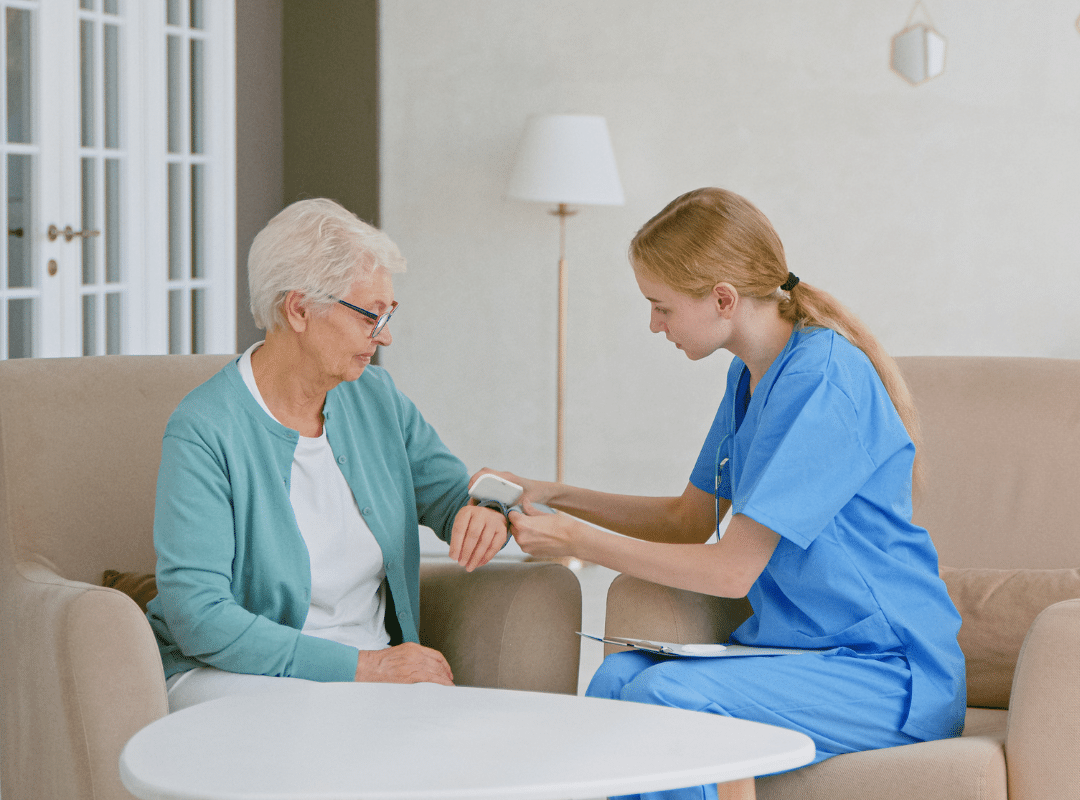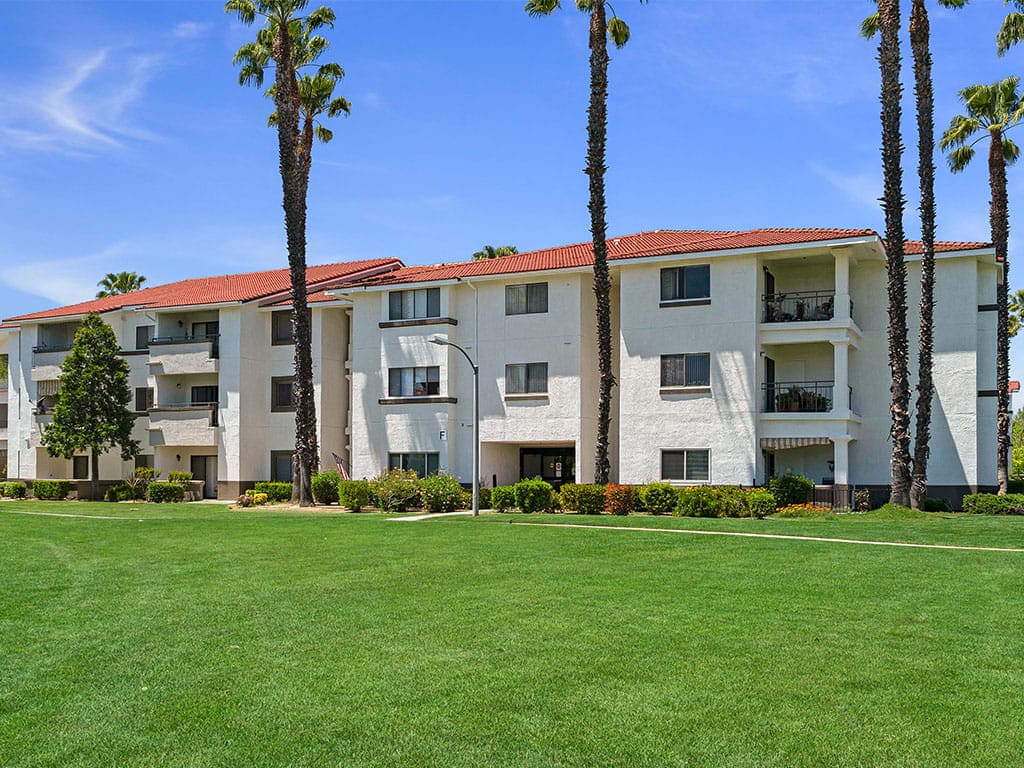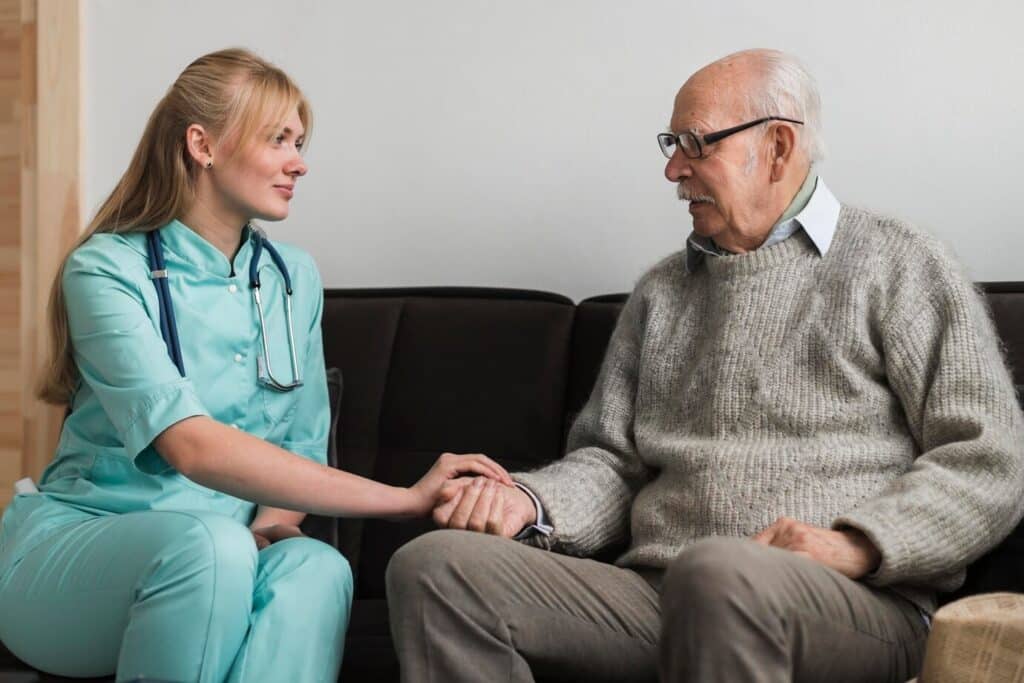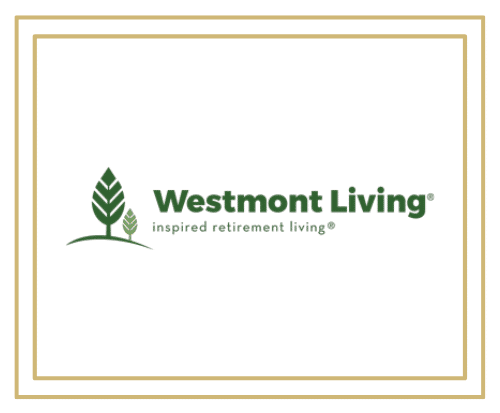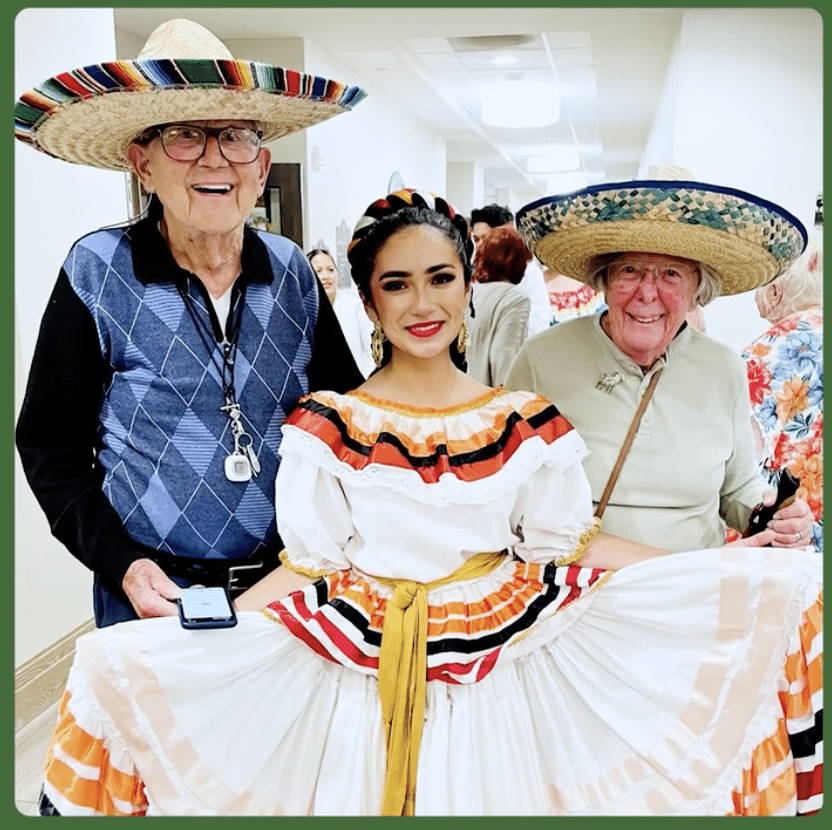Riverside Skilled Nursing Facility: Expert Elderly Care
Riverside Skilled Nursing Facility: Expert Senior Care
At Westmont of Riverside Skilled Nursing Facility, you’ll find expert senior care tailored to meet individual needs. A dedicated team provides 24-hour nursing support and specialized therapies, ensuring residents receive the assistance they deserve. The warm atmosphere and community-oriented activities enhance their quality of life. But what truly sets Westmont of Riverside Skilled Nursing Facility apart? Explore how personalized care plans and engaging amenities create an environment where seniors can thrive.
Comprehensive Skilled Nursing Services
Regarding senior care, the Skilled Nursing Facility in Riverside, CA, stands out for its commitment to individualized care. You’ll find a team dedicated to providing exceptional elder care tailored to each resident’s needs. From 24-hour nursing support to specialized therapy options, every aspect of care is designed to enhance the quality of life for your loved ones. The staff fosters a comfortable environment, ensuring residents feel at home while receiving the required skilled nursing.
With a full range of services, including medication management and personal assistance, you can trust that your loved ones are in compassionate and capable hands. Additionally, the facility emphasizes improving strength and flexibility through tailored physical therapy programs to further support residents’ mobility and independence. Skilled nursing facility Riverside, CA, truly prioritizes the well-being and dignity of every resident.
Rehabilitation and Therapy Options
You’ll find extensive therapy services tailored to your needs at Westmont of Riverside Skilled Nursing Facility. Our team works with you to create personalized rehabilitation plans focusing on your recovery goals. Whether you need physical, occupational, or speech therapy, we support your journey to regain strength and independence. Our state-of-the-art equipment also ensures you receive the most effective therapeutic interventions available.
Comprehensive Therapy Services
A skilled nursing facility in Riverside, CA, understands the importance of personalized rehabilitation and therapy options, ensuring you receive thorough care tailored to your unique needs. Our extensive therapy services utilize various therapy modalities, including physical, occupational, and speech therapy, to help you regain independence and enhance your quality of life.
With skilled professionals dedicated to applying effective recovery techniques, you’ll benefit from targeted interventions designed to address your specific challenges. Whether you’re recovering from surgery, illness, or injury, our supportive environment fosters healing and growth. Additionally, our programs include strategies for pain management that can further improve your comfort and functionality during rehabilitation.
Personalized Care Plans
At Westmont of Riverside Skilled Nursing Facility, you’ll receive a personalized care plan tailored to your unique needs and preferences. Our team continuously monitors your progress, adjusting strategies to guarantee you achieve the best possible outcomes. You’re not just a resident; you’re an individual with specific goals, and we’re here to support you every step of the way.
Individualized Treatment Strategies
When it comes to personalized care plans, understanding each resident’s unique needs is essential for effective treatment. Westmont of Riverside Skilled Nursing Facility focuses on customized care that prioritizes patient involvement in their treatment strategies. Your loved one will benefit from a tailored approach that includes:
- Thorough assessments to identify specific health needs.
- Collaborative goal-setting that encourages active participation from both residents and families.
- Targeted therapies are designed to improve physical and emotional well-being.
- Regular updates to care plans, ensuring they remain aligned with changing needs.
Continuous Progress Monitoring
While you focus on your loved one’s recovery, continuous progress monitoring guarantees that their personalized care plan remains practical and relevant. Regular progress assessments allow caregivers to track improvements and identify areas needing attention. This proactive approach supports continuous improvement in your loved one’s care journey.
By adapting the care plan based on real-time feedback, you can help guarantee that your loved one’s needs are met, promoting ideal recovery and well-being. Collaboration between the care team and family members is vital, as your insights can enhance the assessment process. Continuous progress monitoring makes you confident that your loved one receives the best support tailored to their unique circumstances.
Resident Amenities and Environment
Westmont of Riverside Skilled Nursing Facility creates a warm and inviting atmosphere for residents, where comfort meets functionality. Our engaging spaces cater to both social interaction and personal relaxation, enhancing resident comfort throughout their stay.
Some key amenities that make our community care nursing home stand out include beautifully landscaped courtyards, private and semi-private rooms, and activity programs to encourage engagement and well-being. Our dedicated team ensures every resident enjoys a fulfilling and comfortable lifestyle, enriching their stay at Westmont of Riverside Skilled Nursing Facility.
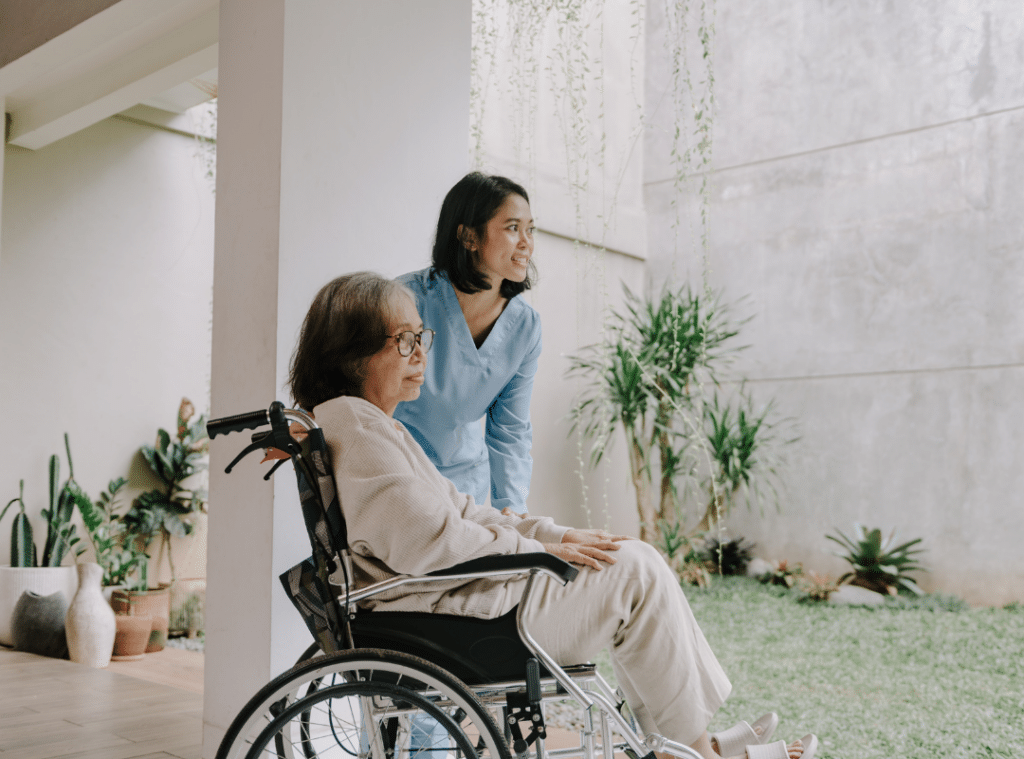
Staff Expertise and Support
At Westmont of Riverside, you’ll find a dedicated team of professionals committed to providing exceptional care and support tailored to each resident’s needs. Our staff undergoes thorough training, guaranteeing they possess the skills and knowledge to deliver high-quality care. This commitment to staff training enhances their ability to respond effectively to residents’ diverse needs.
Team collaboration is at the core of our approach, fostering an environment where caregivers work together seamlessly to ensure every resident feels valued and supported. You can trust that our experienced staff will prioritize your loved one’s well-being, combining their expertise with a compassionate touch. Nursing facility care at Westmont of Riverside ensures that residents receive the best support in a nurturing and secure setting.
Community Engagement and Activities
Engaging with the community is essential to life at Westmont of Riverside, as it enriches residents’ experiences and fosters connections. Various community events and social activities promote interaction and joy. From weekly game nights to local outings, our activities are designed to create a sense of belonging and fulfillment for every resident.
These experiences enhance daily life and strengthen relationships, creating a vibrant community where residents feel valued and engaged. Your involvement helps build a supportive environment that benefits everyone.
At Westmont of Riverside, you’ll find a nurturing haven where expert care and personalized attention come together like a well-tuned symphony. Your loved ones will benefit from extensive services, tailored support, and a vibrant community encouraging engagement. With a dedicated team, they’ll receive exceptional medical care and experience a fulfilling quality of life. Trust Westmont of Riverside to be the compassionate partner in their journey to wellness and happiness. For more information, please call us at 951-697-2100.
Frequently Asked Questions
What is the difference between a skilled nursing facility and a nursing home?
A skilled nursing facility (SNF) provides short-term, specialized medical care and rehabilitation services, typically for individuals recovering from surgery, illness, or injury. On the other hand, a nursing home offers long-term custodial care for individuals who need ongoing assistance with daily activities, such as bathing, dressing, and medication management. While both offer 24/7 care, SNFs focus on rehabilitation, whereas nursing homes provide extended residential support.
How long can someone stay at an SNF?
The length of stay at a skilled nursing facility depends on the individual’s medical needs and insurance coverage. Medicare typically covers up to 100 days per benefit period for qualifying stays, but many individuals stay for a shorter period based on their recovery progress. Long-term stays may be possible for those needing extended care, but these are usually funded through private pay or Medicaid.
How to get admitted to a skilled nursing facility?
Admission to a skilled nursing facility usually requires a doctor’s referral, often following a hospital stay. The facility assesses the patient’s medical needs to determine eligibility for skilled nursing care. Insurance, including Medicare and Medicaid, may cover the remainder if the individual meets specific criteria for professional care services.
When should I go to a skilled nursing facility?
A skilled nursing facility is appropriate when a person needs short-term medical care and rehabilitation after hospitalization due to surgery, injury, or a serious illness. It is also suitable for those requiring ongoing medical supervision, such as wound care, physical therapy, or IV therapy. If a person cannot safely recover at home but does not need long-term nursing home care, a skilled nursing facility may be the best option.



